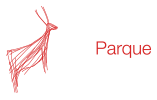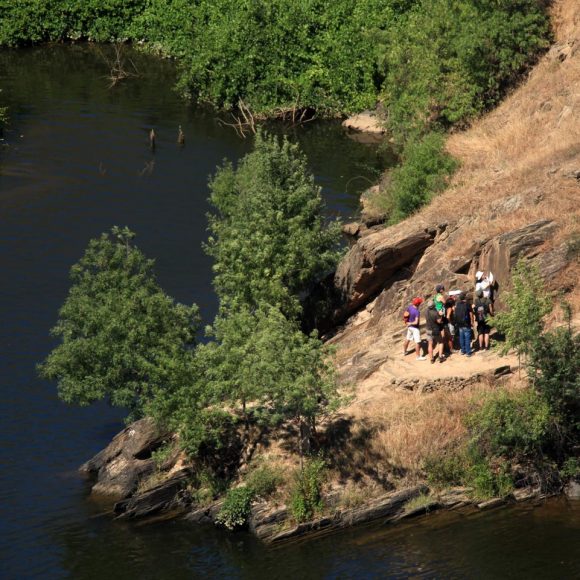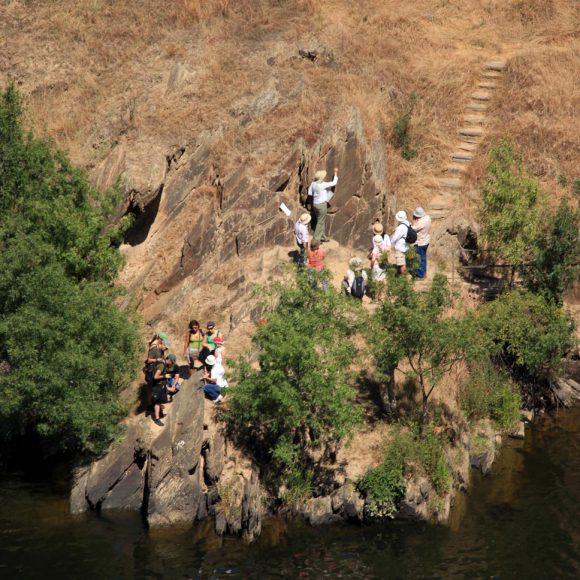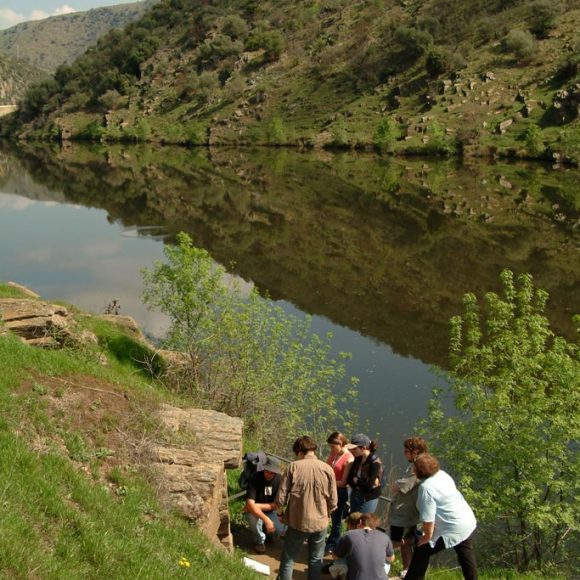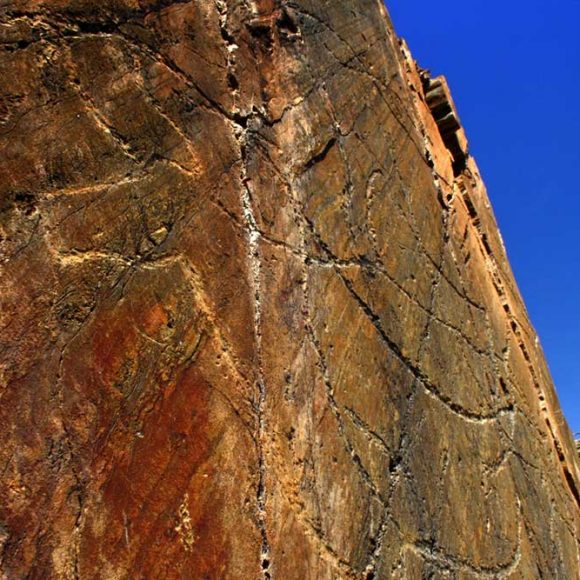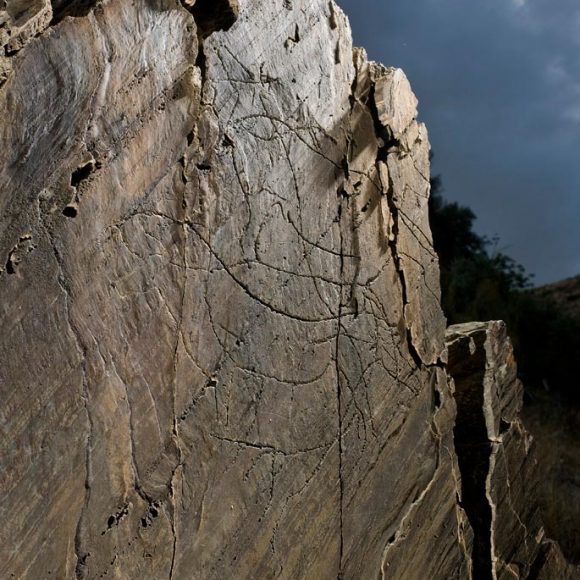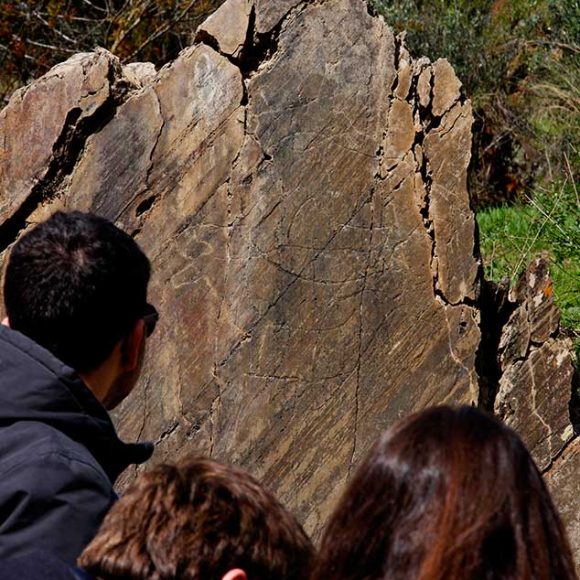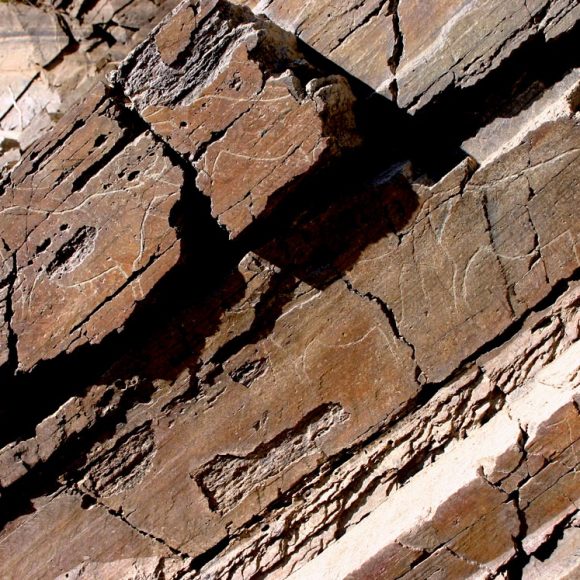Canada do Inferno
Plan Visit
GUIDED VISIT TO THE PARK
Canada do Inferno
Canada do Inferno is located on the left bank of the Côa, in the municipality and parish of Vila Nova de Foz Côa. The tour starts at the Côa Museum aboard a jeep and driving on a tarmac road, for about 7 kms, until the area where the abandoned Côa dam was being built. From here, another 3 kms on a cobblestone road lead to the site, through a landscape marked by the said construction work that determined the recent history of the Côa rock art. The final section is a narrow but well-maintained track on foot stretching some 400 meters until the first engraved outcrops shown to the public.
-
Price
18,00€ per person
-
Total walking distance
About 800 meters.
Difficulty: medium
-
Route
The route chosen for public visitation includes six engraved rocks.
-
Duration of the visit
1h30 to 2h
-
Place of departure
Côa Museum, on the outskirts of Vila Nova de Foz Côa. The museum is about 3 kms from the center of Vila Nova de Foz Côa, accessible via tarmac road. (GPS: N 41º 04’ 47.5’’ / W 7º 06’ 44.4’’)
-
When
In the morning, every day except closing days
-
More information
Through the numbers +351 279 768 260* / +351 965 778 799** or email visitas@arte-coa.pt
-
How to make a reservation
To guarantee a visit to the Côa Valley, we recommend you to make a reservation through the following numbers: +351 279 768 260* (option 1) / +351 965 778 799** or email visitas@arte-coa.pt
In the reservation request, you must mention the date for the visit, the place, the number of people and a phone number.
*national telephone calls
** national mobile telephone call
The site can be found on the left bank of the final section of the Côa river, next to an old fluvial beach, now covered by the Pocinho reservoir, which also covers a large part of the 46 recorded rocks known on site, 39 featuring Paleolithic figures. The itinerary chosen for public visitation, conditioned to accessibility and perceptibility of engraved motifs, includes six outcrops, all except one with Paleolithic figures.
This was the first rock art site identified at Côa, in the end of 1991, with the discovery of rock 1. The discovery would be publicly announced in November 1994. The chronology of rock art motifs at the site encompasses all phases of Paleolithic art at Côa as well as later periods, except the Iron Age.
Rock 1 should be noted for its historical importance. It features a set of mostly overlapping representations. The most noticeable motifs were made resorting to pecking, supplemented with abrasion. A horse figure with two heads documents the invention of graphic animation.
In rock 14, among several figures, a beautiful goat engraved by multiple filiform traces should be also noted as the current logo of the Côa Valley Archaeological Park and Museum.
The tradition of engraving at Canada continued during the Neolithic period and only ended in the second half of the 20th century with the pecked engravings completed by the last millers working at the river margins. Among them are Alcino Tomé and António Seixas, who worked in Canada do Inferno in the 40s and 50s of the 20th century, and whose engravings are mostly submerged. Rock 7, located just underneath rock 1, presents easily visible Modern Age engravings, In fact, the itinerary followed in the visits corresponds to the ancient millers path leading to Canada do Inferno. As such, during the visit it’s possible to observe several examples of traditional architecture in the region.
